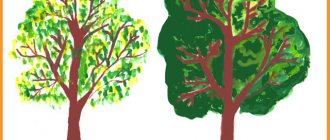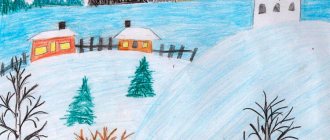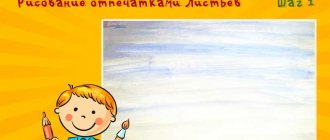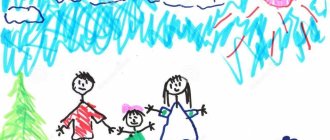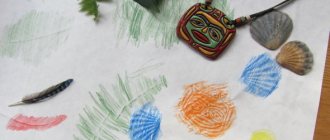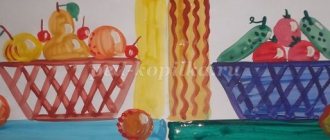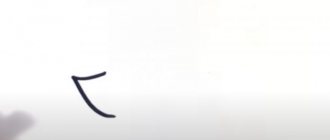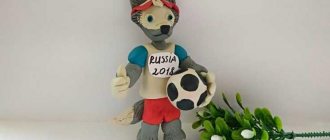Representatives of the bird world are found in nature in an amazing variety, they symbolize the sky, freedom, life and abundance. Sketches of birds often appear in children's albums.
Drawing birds is not only exciting, but also educational, because children get acquainted with forest, domestic and exotic species.
Parents should tell their child about their value to the natural environment, their anatomical structure and differences, sometimes even watching the winged singers from the window and feeding them in the winter.
How to draw a bird
The process of drawing birds will be greatly simplified if you follow the recommendations and practice regularly, improving your hand. Master classes will be useful for children of all ages, helping them cope with the difficult task of mastering artistic skills.
Owl
Let's try to recreate this expressive image step by step:
- Work begins with two circles with cross-shaped lines at the smaller top figure.
- We outline them with smooth lines, continuing the back part, ending with the tail.
- We finish drawing the legs with three toes.
- We depict round eyes with eyebrows and characteristic ears.
- Below we place a beak that looks like a hook.
Now we need to display the plumage, which lies in rows on the wing, tail, and the fluff on the chest, conveyed by shading. The pencil drawing of the bird is ready.
Penguin
Not a flying, but a floating specimen, recognizable from cartoons and movies, also belongs to the family of birds; its appearance is not difficult to reproduce in profile. You will need to outline a vertical egg ending in a small head with a beak. Draw a short tail and legs.
The most important thing is to correctly paint the picture with paints or felt-tip pens - the head area, the back with wings-flippers are black, and the abdomen is white.
Chick
The proposed version of the image of a chick is simple. We draw an arc from bottom to top, ending with an arrow-nose. We draw the eyeball with the pupil side by side. From the arrow we continue the bow to the starting point, ending it with a tail. We draw on the arched wing and thin legs.
Parrot
Many people keep these bright individuals at home; let’s draw a striking bird step by step:
- We sketch out a diagram of 2 ovals, on the left we draw a back line that turns into a falling tail.
- We use a semi-rounded ruler to mark the bottom of the wing.
- Draw the beak-hook, eyes-circles and paws.
We proceed to contrasting coloring, conveying the feeling of feathers. We use red, blue, yellow. Using a black tone we highlight the base of the beak and the edges of the feathers.
If you want to capture a parrot in flight, use a pair of arched rulers to show outstretched wings with an arched lower edge; its face will be half turned towards us, complemented by a beady eye and a hump nose.
Woodpecker
The cautious and beautiful little bird, by knocking on a tree trunk, not only gets food for itself, but also lets other “relatives” know about the boundaries of its territory, attracting females in the spring. Procedure:
- We draw an oval head and a body with extending wings.
- We draw the line of the beak, legs and move on to the hanging tail.
- We detail the wing by tracing the contours and highlighting the feather strokes.
- We remove unnecessary lines and refine the eye.
Decoration will add realism - a red head, a white chest. We emphasize the beak and other body fragments with black coloring.
Stork
This handsome guy has long legs, an ovoid body and a small head with an elongated yellow nose. Having completed the sketch, we clarify the details. Using a series of rulers we draw out the raised wings.
The ankle-shaped, yellowish limbs have a thickening in the middle. The aerial inhabitant has a snow-white color with a gray-blue tint at the tips of the plumage. Using strokes we emphasize the fluff in the chest area.
If you take on a heron, then give its neck a greater bend, and draw a crest on the back of its head, let it keep its balance on one limb, tucking the other, as it is more accustomed to do when hunting for river life.
Bullfinch
Let's depict a small bird with a colorful appearance that does not fly away to hot countries for the winter:
- Draw an oval body and a circle head.
- From them we draw a line that turns into a wing.
- We fix the neck and tail segment.
- The paws will tenaciously hold on to the branch.
We paint the figure - a bright red breast, a white spot under the eye, reminiscent of a bead with a dot, highlighted darkened plumage.
flying seagull
At first, the task seems difficult, however, even a child can do it:
- A round head and an elongated body with a lower convexity are outlined.
- The near wing has a more elongated format compared to the far element.
- The continuation of the figure will be the tail.
- The bird's legs are folded and pressed.
- We display zigzag feathers more accurately.
Hatching shows the fall of the shadow. It is worth noting that the dimensions of the wings of flyers increase in direct proportion to the size of the body.
drawing migratory birds outline of a drawing lesson (senior group)
Drawing lesson notes
"Migratory birds"
(senior group)
Tasks:
Teach children to draw migratory birds, building an image from its component parts.
Develop skills in drawing a sketch of a picture with a simple pencil.
Consolidate and expand knowledge about wintering and migratory birds.
Cultivate a caring attitude towards birds.
Materials:
Recorded bird voices, image of a tree, pictures of wintering and migratory birds, magpie, letter, samples for drawing birds.
Progress of the lesson :
(The voices of birds are recorded. Children with a teacher enter the group)
Educator:
- Let's see what birds are sitting on our tree? Name them. (Woodpecker, tit, crow, magpie, black grouse)
- Oh, guys, I can’t understand something, are all the birds gathered on the tree? Help me to understand. (Children find out that all birds winter and there are no migratory ones.)
- What happened? Where have the migratory birds gone? But here is some letter from the magpie, let’s take the letter from the magpie and read it.
- Oh, children, an accident happened. It turns out that the Snow Queen, the mistress of winter, captured the birds on the way to the south and does not want to release them into the wild. The birds are asking for your help.
“The snow queen is probably bored of being alone and that’s why she doesn’t want to let the birds go.” I suggest drawing portraits of birds and giving them to her. And then she will release all the birds.
- Guys, let's think, why are birds called migratory? That's right, migratory birds are birds that spend half the year with us, and leave us for the second half of the year, flying to other lands. Why do these birds fly away from us in the fall?
-All these birds eat insects. And in the fall the insects disappear. Birds are deprived of their main food and are forced to fly to warmer climes. There are many insects there all year round.
Physical exercise “A flock of birds is flying south”
A flock of birds flies south, the sky is blue all around. (Children wave their arms like wings) In order to fly faster, you need to flap your wings. (Children wave their hands more intensely) The sun is shining in a clear sky, An astronaut is flying in a rocket. (Stretching - arms up) And below the forest, fields - The earth is spread out. (Low bend forward, arms spread to the side)
The birds began to descend
Everyone sits down in the clearing.
They have a long way to go, the birds need to rest. (Children sit in a deep squat and sit for a few seconds) And again it’s time to hit the road. We have a lot of flying to do. (Children stand up and flap their “wings”)
Here comes the south. Hooray! Hooray! It's time for us to land. (Children sit at tables)
- Now look at these pictures. Looking at them, we understand that the body of birds consists of several parts. Which ones? (head, body, tail, wings) What shape is the head? (round) What shape is the body? (oval) What shape is the tail? (can have a triangular shape, or can be forked, like a swallow) The wings have a curved shape if the bird is flying, and oval when folded. The beak is triangular.
— You know how to draw geometric shapes. Therefore, you can easily depict the components of birds. You just need to connect them correctly.
(Show)
-First, let's draw an oval body. Then we will draw the head. Oval wings, slightly pointed at the ends - these are the longest feathers. Rectangular tail, triangular beak, round eyes. And then, let's draw the paws, draw the feathers.
— We take simple pencils and make sketches.
(children draw)
Result:
- Well done boys. You all did your best and we got wonderful birds. I think the snow queen will be pleased and will definitely let our feathered friends go.
— What migratory birds will we wait for?
Game: “Find the migratory bird”
- You all completed the task. I will give you all invitation tickets to the Birds of Migratory quiz.
Small breeds
Sparrows are the most common family; their oval body is equipped with a round head and a triangle-beak. Draw the wing, eye and thin legs. An interesting titmouse with a round yellow belly.
The smallest bird is the hummingbird, which is distinguished by its long nose, thickened at the base, with which it drinks nectar from flower buds; it has also earned fame for its ability to fly backwards. The picture will turn out believable if you carefully work out the feathers of the birds.
Crow
Flocks of crows have chosen places close to humans; these birds are smart and intelligent. We offer a way to draw this bird easily and simply:
- On one diagonal we draw contour sketches of the head and torso, thickened towards the bottom and a triangular tail.
- We connect these parts with a stroke, completing the beak and two paws with claws.
- We detail the wing and give the tail a flat appearance.
- Having removed the basting, we move on to the plumage.
- Inside the eye we designate a highlight; an additional curve goes from it to the beak.
You can start shading with a black pencil, emphasizing the feather coating with contrast. If you choose the image of a magpie, then remember its peculiar black and white coloring and long tail.
Unusual specimens
There are varieties that cannot be confused with anyone else. For example, this is an overweight pelican, with a beak-bag where it stores fish, or a toucan with a special structure of a voluminous nose-beak.
Pink flamingos on elongated legs are graceful and spectacular, and the nimble swallow is distinguished by its forked tail and erected hut nests.
The highlight of the peacock is a chic blossoming fan-tail with diamond-shaped colored patterns, and its head is crowned with a “crown” of corollas with circles.
Let's depict a formidable eagle:
- We make a general sketch of the body with all its fragments.
- We start detailing from the head with a slightly open beak-hook and an eye with a pupil under the eyebrow.
- We approach the back, lowering ourselves onto the tail section.
- The sitter has sharp claws on his large paws, and specific “pants” on his shins.
- We convey the plumage on the powerful wings by shading.
We draw the stump on which the predator is sitting.
Graceful swans are impressive, associated with fidelity and love. The simplest version begins by drawing the number two flowing into the body rocking on the waves. These birds have a characteristic marking on their wide beak and webbed feet.
GCD move
1. Finger gymnastics
Visiting the thumb Put the thumbs of both hands up
Came straight to the house: Index and middle,
Nameless and last. Alternately, the called fingers are connected to the thumbs on both hands at the same time
The little finger itself Fingers are clenched into a fist, only the little fingers point upward
He knocked on the threshold. Fists knock on each other
Together fingers are friends,
They cannot live without each other. Rhythmic clenching of fingers into fists
- Guys, let's remember what time of year it is (Autumn)
.
Right. And what changes occur in nature with the arrival of autumn (Children list the signs of autumn ?
- Well done! Correct! But today I would like to talk about birds . Let's remember what birds we have seen and know (Children's answers)
.
Do they all stay with us for the winter (No? What are the names of those birds that are not afraid of the cold and stay here (Winterers? What wintering birds do you know (Sparrow, crow, tit, bullfinch, pigeon, owl, woodpecker, magpie?
And What are the names of birds that fly away to warm regions ( Migratory ? Yes. That’s right. What migratory birds do you know (ducks, swans, cranes, swallows, rooks, starlings, cuckoos? Why do you think they fly away (They are cold here and nothing to eat?
- Right. Birds that fly away . Many migratory birds eat insects . birds in search of food .
– Look carefully at the illustrations.
Pay attention to how the birds . Waders, herons, fly in a line , in front or in a transverse row. Geese most often fly in a school. Geese, cranes, swans and other large birds .
- Guys, let's rest a little. Imagine that you are birds and repeat after me:
Birds jump and fly. They wave their arms and jump up and down
Birds collect crumbs. "Peck"
The beaks were cleaned. Stroke your hands and noses
Birds fly, sing, wave their arms
The grains are pecked. "Peck"
4. Independent activities of children
– Have you rested? Fine! And now I suggest you draw birds flying south . Look what's on your tables (Children's answers? First we will make a sketch with a simple pencil, and then we will outline and color it with wax pencils.
During the practical part, explain to the children that sketches should be drawn with light lines ; they need not be finished, not finished to the end; you can leave the failed form and start another; I need to try to make more sketches. The resulting sketches are outlined with a wax pencil.
During the lesson, the teacher analyzes the images created by the children, explains mistakes, and guides them in searching for the correct representation of form and movement.
At the end of the work, the children attach the drawings to the board. Demonstration of their works by children; choose the most neat and beautiful works with the children.
– Children, what did we do today (Children’s answers)
Well done, you all tried your best and you did a good job. Thank you.
According to popular belief, where the stork makes a nest, happiness will settle. Maybe that’s why, or maybe also because the stork is a large and beautiful bird , but all people have a special relationship with the stork. Unfortunately, to draw a stork “from life,” so if you need a drawing of a stork in a nest, look for a suitable photo on the Internet.
To make it easier for you to draw a stork standing or sitting in a nest, let’s first draw a flying stork, step by step, with a simple pencil.
1. Where to start drawing a stork
2. Wings, beak and tail of a stork
The first, most important contours have been drawn , now it will be easy to draw a stork , as if assembling a construction set from Lego parts , gradually adding more and more details. First draw the general shape of the stork's beak. Then you can draw the tail and at the very end draw the first outlines of the wings.
Fairytale variations
The firebird from the fairy tale has sweeping fan-like wings and a flowing plume-tail, a non-trivial fiery coloring, performed at its own discretion.
It is filled with figural patterns of different colors, from which streaks radiate, comparable to hair. Next, you need to blacken the edges of the plumage and fix the head crest.
Also interesting is a character who has an unusual, bright appearance. This is a circle with a polygonal beak, on the sides of which there are huge eyes with the obligatory “bags” under them. There is a crest on the head and a miniature tail on the left. You can start coloring.
Dove of peace
When thinking about how to draw a bird for children, remember the dove - a fluttering creature with a flowering twig in its beak, which is a symbol of peaceful life.
Having outlined the oval body and the circle head, they are combined by adding a carved tail. The wings, open to the sides, can be compared in shape to an inverted trapezoid. The final stroke is to give the edges of the feathers fragmentation with zigzags.
Of course, it is impossible to cover all the inhabitants of heaven. Starting with one image and strengthening your skills, move on to the next example. Children will certainly enjoy this exciting pastime, which not only develops fine motor skills, but also expands their horizons and knowledge about the earth's fauna.
GCD move
I. Finger gymnastics
Visiting the thumb Put the thumbs of both hands up
Came straight to the house: Index and middle,
Nameless and last. Alternately, the called fingers are connected to the thumbs on both hands at the same time
The little finger itself Fingers are clenched into a fist, only the little fingers point upward
He knocked on the threshold. Fists knock on each other
Together fingers are friends,
They cannot live without each other. Rhythmic clenching of fingers into fists
- Guys, let's remember what time of year it is (Autumn)
. Right. And what changes occur in nature with the arrival of autumn (Children list the signs of autumn?
- Well done! Right! But today I would like to talk about birds . Let's remember what birds we have seen and know (Children's answers)
.
Do they all stay with us for the winter (No? What are the names of those birds that are not afraid of the cold and stay here (Winterers? What wintering birds do you know (Sparrow, crow, tit, bullfinch, dove, owl, woodpecker, magpie?
